It’s been a few years since we first set foot in Kanchanaburi. Well, not that many years actually; it was back in 2013 when we discovered this key tourist town in Thailand. We’ve returned several times since then, to the place where the famous bridge over the River Kwai is located. But one thing hasn’t changed… it rains a lot, especially every afternoon.
We’ve returned many times and gathered so much more information about this destination, which made us ask ourselves: how is it possible that we still don’t have a post compiling all these articles? Well, here we go!
Kanchanaburi is a province in western Thailand, near the border with Burma. Its capital is a popular tourist destination, largely due to the war film The Bridge on the River Kwai, based on Pierre Boulle’s book of the same name.
However, the surrounding area offers much more, with beautiful landscapes, temples, and abundant nature, enough to spend several days exploring. From a cabin near the river, we share some tips about this destination.
You can visit this Thai city year-round, but there are three distinct seasons:
Travel Advice: Check out our article on the best time to visit Thailand for month-by-month climate information.
To begin with, we always recommend getting good travel insurance Thailand. This can save you a significant amount on medical expenses and, most importantly, ensures that the insurance covers the costs upfront, so you don’t have to pay out of pocket.
In the previous article, we go into more detail about healthcare in Thailand, as well as tips on how to get the best insurance (and save money).
Nowadays, finding hotels, guesthouses, or restaurants in Thailand with free Wi-Fi is pretty common. However, there are still those who prefer (or need) to stay connected at all times.
That’s why we’ll show you how to get an eSIM Thailand card with internet— now also available with unlimited data.
The journey from Bangkok to Kanchanaburi by road usually takes between 3 to 3.5 hours, depending on traffic and how fast the driver is.
There are buses and minivans that depart from the Khaosan area, which are the best option if your accommodation in Bangkok is nearby. Alternatively, you can go to Mochit Station and depart from there, though you’ll need to take a taxi to the station first.
For more detailed information, you can check out our article on How to Get from Bangkok to Kanchanaburi (All Options) or use the following buttons for direct access.
There are several ways to get from Chiang Mai to Kanchanaburi, but since there is a direct route available, we always recommend this option rather than jumping from city to city via bus, minivan, and train. The journey takes between 10 to 12 hours, including a stop for lunch.
We explain this transport option in detail in our article: How to Get from Chiang Mai to Kanchanaburi in a Sustainable Way.
If you’re planning to travel from one of these islands to Kanchanaburi for a change of scenery, we recommend taking a combined Boat+Bus ticket to Hua Hin, and then catching a minivan to Kanchanaburi.
There’s a chance you might not make the connection in Hua Hin. We provide all the details for this route in our article: How to Get from Koh Tao to Kanchanaburi (via Hua Hin). (coming soon)
One of the most famous landmarks in Kanchanaburi, the Bridge over the River Kwai was part of the “Death Railway,” built by prisoners of war during World War II under Japanese control.
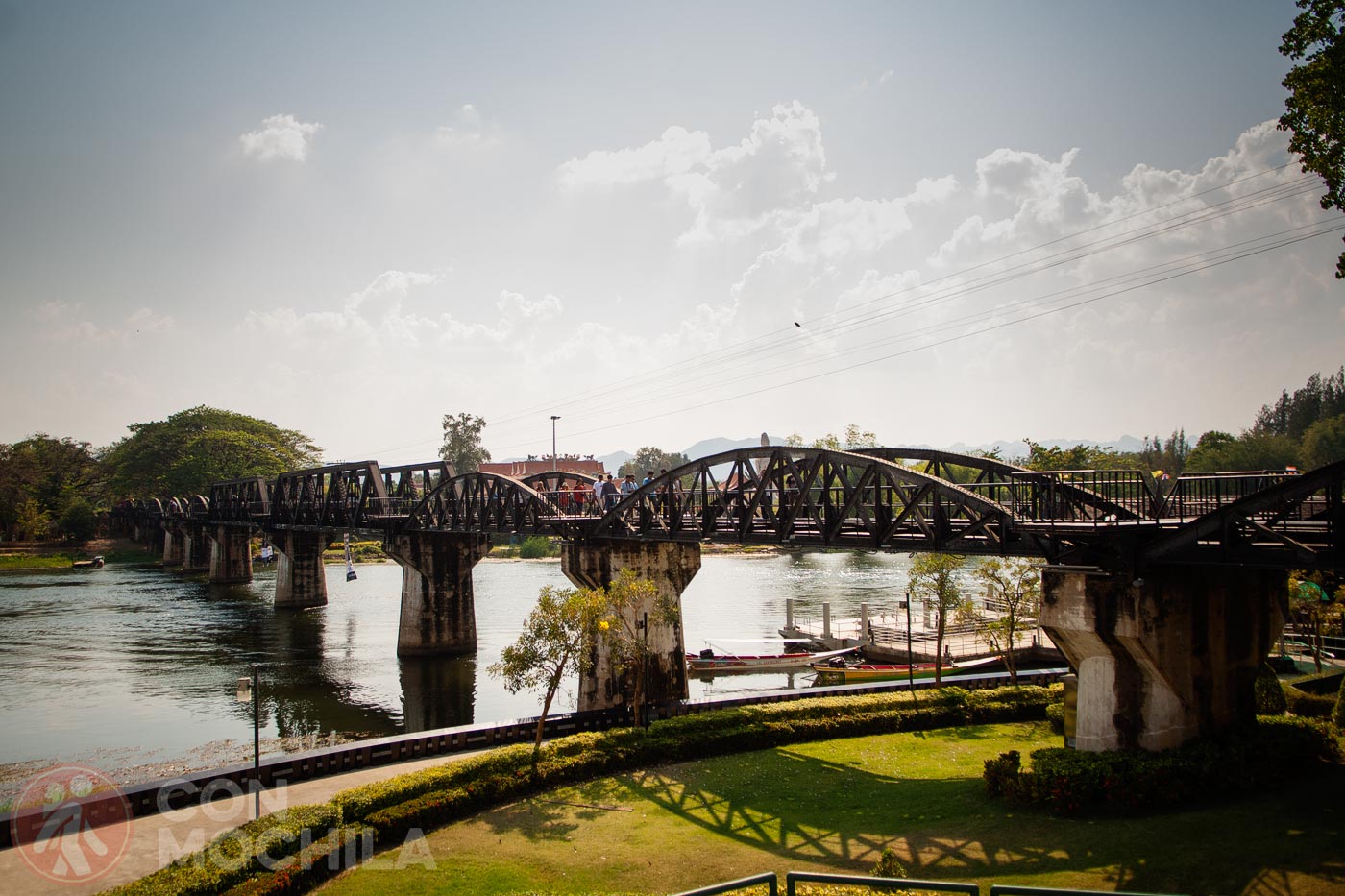
Over 100,000 lives were lost during the construction of the railway, which was intended to link Thailand to Burma (Myanmar). The original bridge was destroyed by US bombs in 1945, but what you see today is a reconstruction.
The Death Railway earned its nickname from a tragic chapter in world history: World War II. Its rapid construction, commissioned by Japan in just two years, aimed to exploit Thailand’s strategic location and establish a communication and transport route to Burma for military purposes.
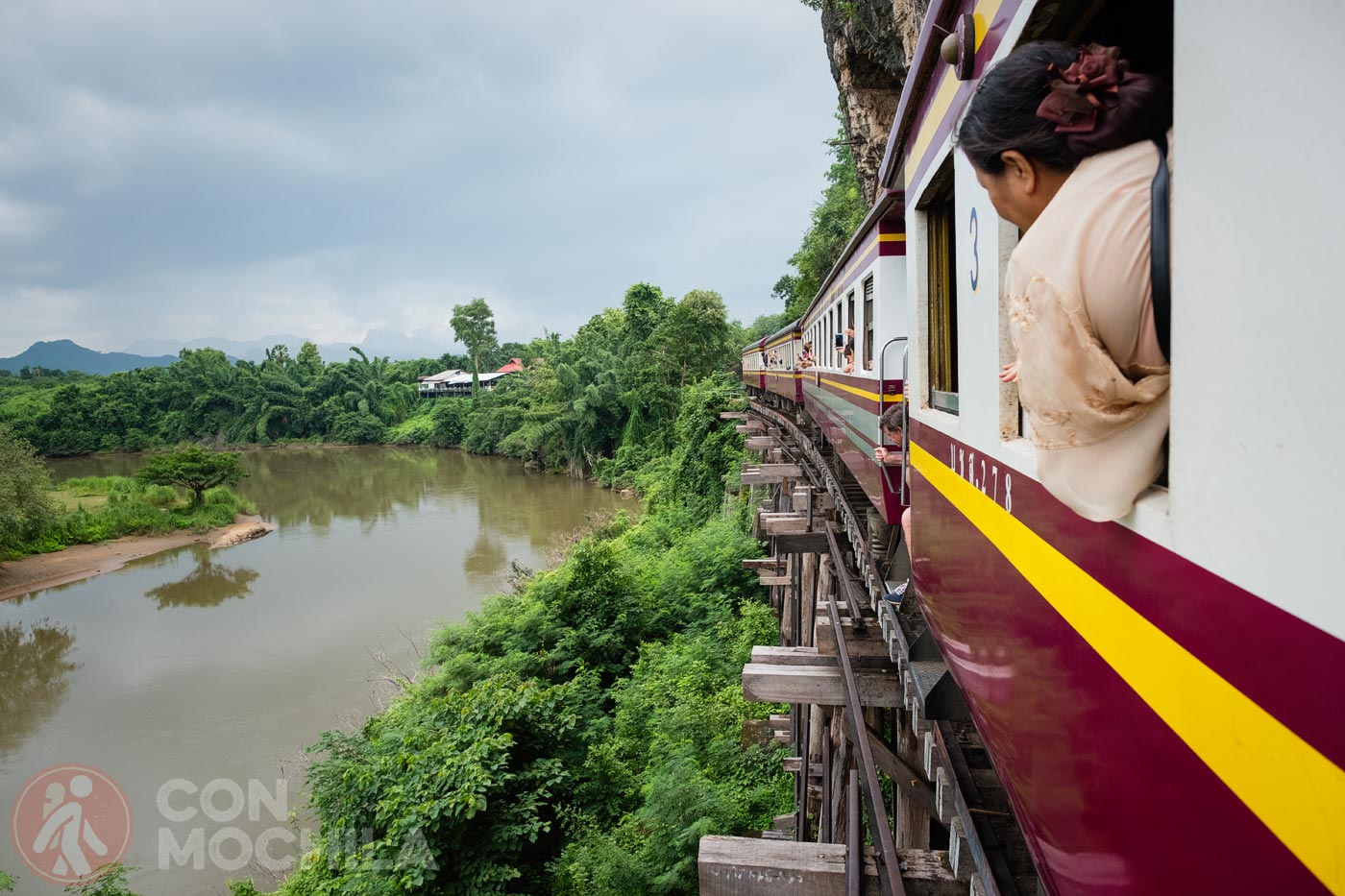
We recommend taking a ride on the Burma Railway to enjoy the exceptional views of the gorges and jungle, following the scenic course of the River Kwai
Continuing with historical visits, the Kanchanaburi War Cemetery was designed by Colin St Clair Oakes and is located right next to the main road, close to the guesthouse street. Admission is free.
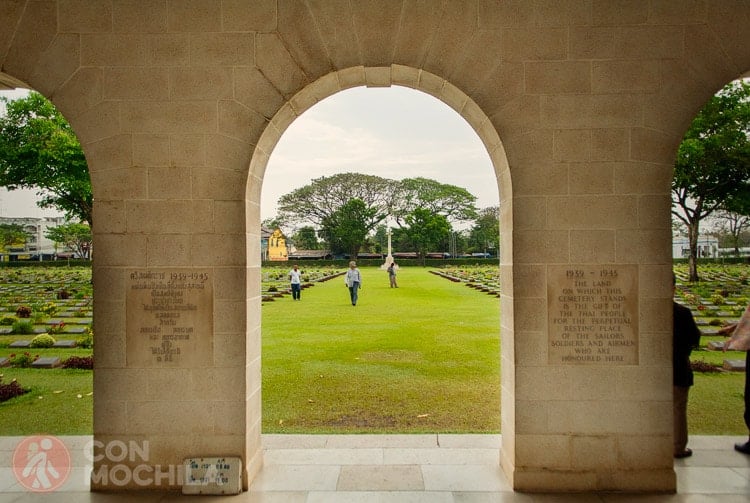
This cemetery serves as a memorial to the prisoners of war who died during the construction of the Burma-Thailand Railway.
The JEATH War Museum is situated by the river, about a kilometer from the Kanchanaburi bus station. Its buildings are a recreation of the bamboo huts in which prisoners of war lived during the railway’s construction.
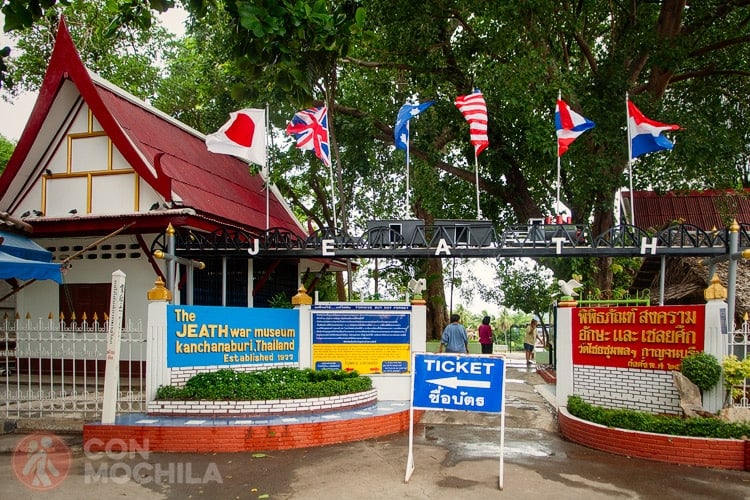
It is an interesting place to visit, especially due to the historical significance behind it.
Hidden in a cave accessed via steep stairs that lead into the mouth of a dragon, Wat Ban Tham can be a challenging climb, even for the fittest tourists. However, the views from the top make the effort worthwhile, and you can enjoy the beautiful scenery along the way.
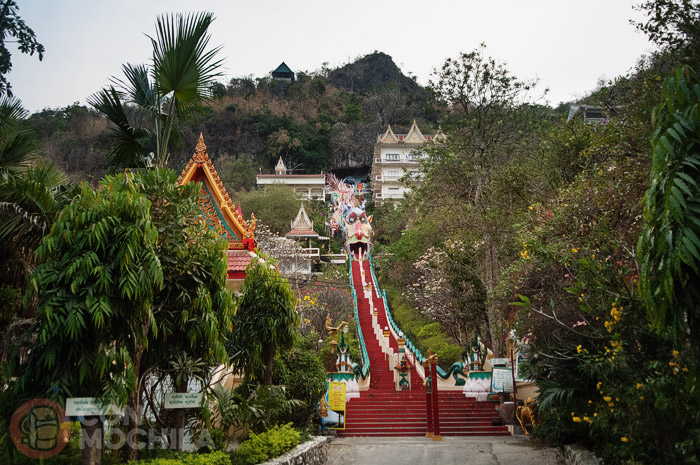
This is a must-see if you are in Kanchanaburi. It’s close by, and entry is free.
Also known as the Tiger Cave Monastery, Wat Tham Suea features a 14-meter-high Buddha statue and is located on the outskirts of Kanchanaburi. The temple is built in a combination of Thai and Chinese styles and sits atop a hill, visible from afar.
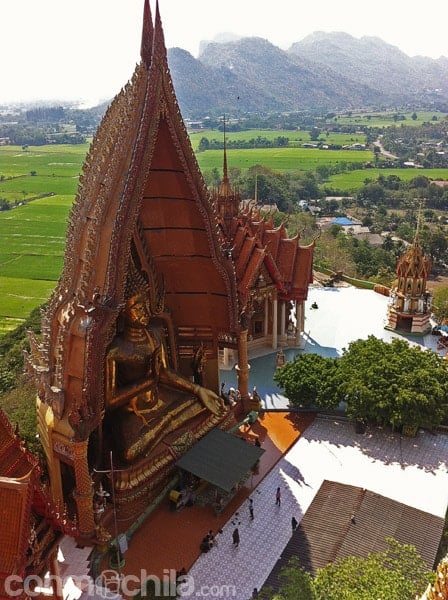
This is another must-see in Kanchanaburi, with free entry and easy access.
With seven heights and beautiful surroundings, the Erawan National Park receives every day hundreds of tourists who literally invade its pools. It is best to visit them on a day trip departing from Kanchanaburi, as they are a bit far from Bangkok.
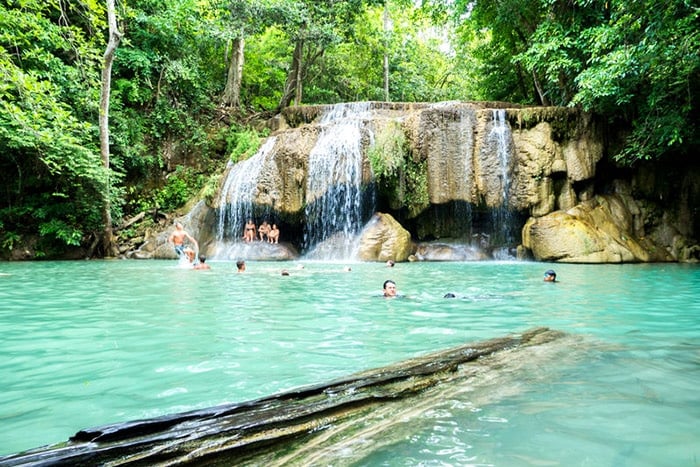
This natural wonder is breathtaking when you first see it. We discovered this massive acacia tree on the recommendation of a friend, and it’s only about 14 kilometers from Kanchanaburi. The short journey is made even more enjoyable by the beautiful scenery along the way.
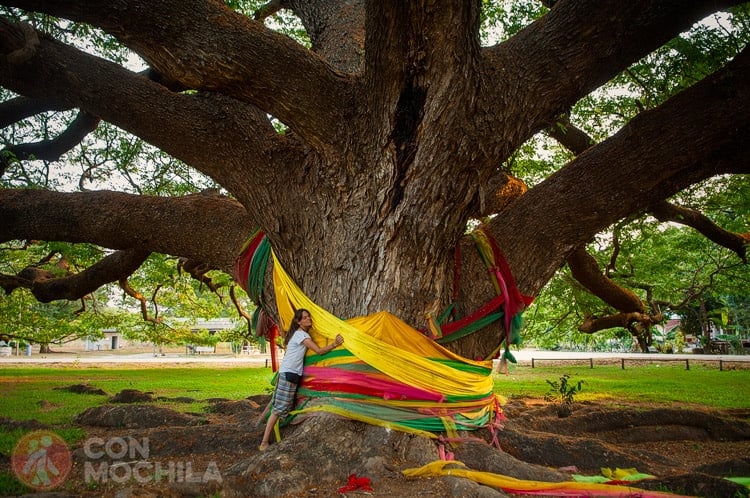
Located within Saiyok National Park, these waterfalls are not as well-known as the Erawan Falls but are equally impressive. The national park also offers various caves to explore, such as Lawa, Than Lot, and Dao Wadung, if you want to discover more natural wonders.
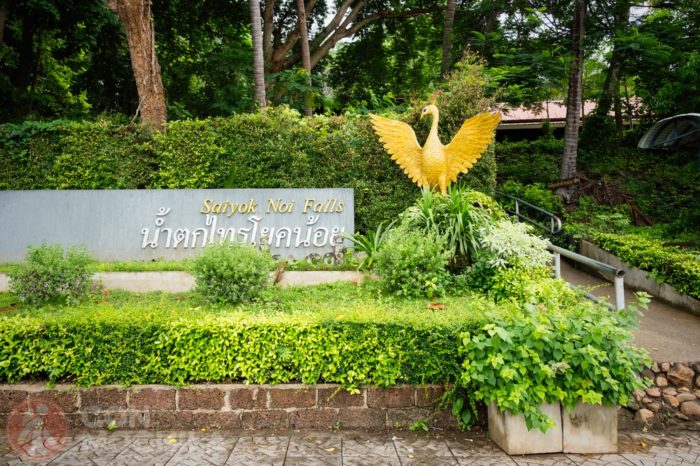
The Kanchanaburi Night Market, located right next to the train station, is a bustling street market where you can find a wide variety of items: shoes, clothes, bags, beauty products, hardware, mobile phone accessories, DVDs, piercings, perfumes, and more.
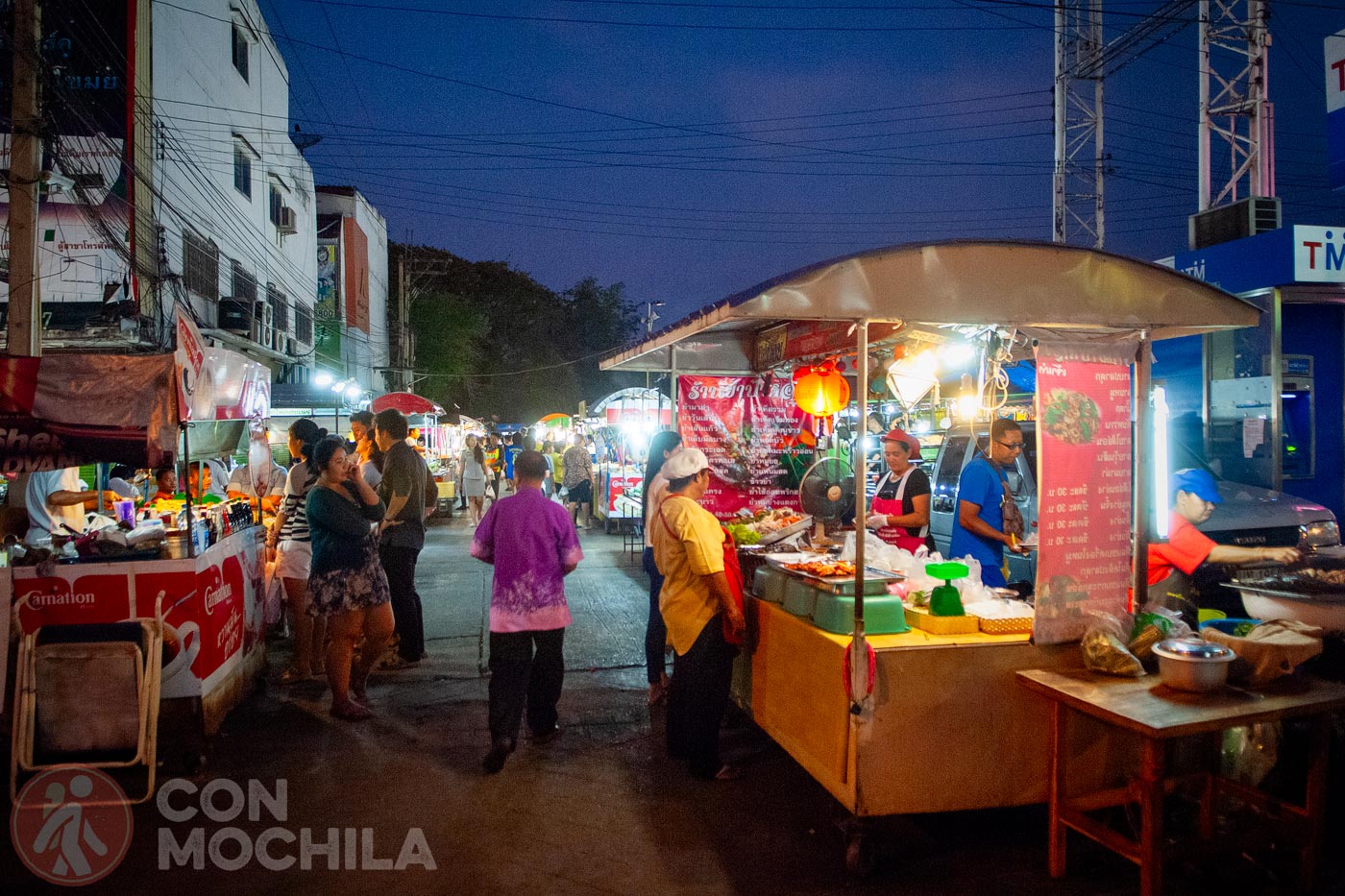
The market is organized into a labyrinth of stalls, with one of the streets dedicated to food. The enticing smells will surely draw you in, and you can sample local dishes like chicken wings for as little as 6 Baht.
The options for Thai massage in Kanchanaburi are abundant. For around 150 Baht, you can find numerous modest establishments with skilled therapists who will expertly work on every muscle and bone with a traditional Thai massage.
You can choose from various types, including the classic Thai massage, oil massages, or treatments focused solely on the feet or head. The main tourist street in Kanchanaburi is lined with these massage venues.
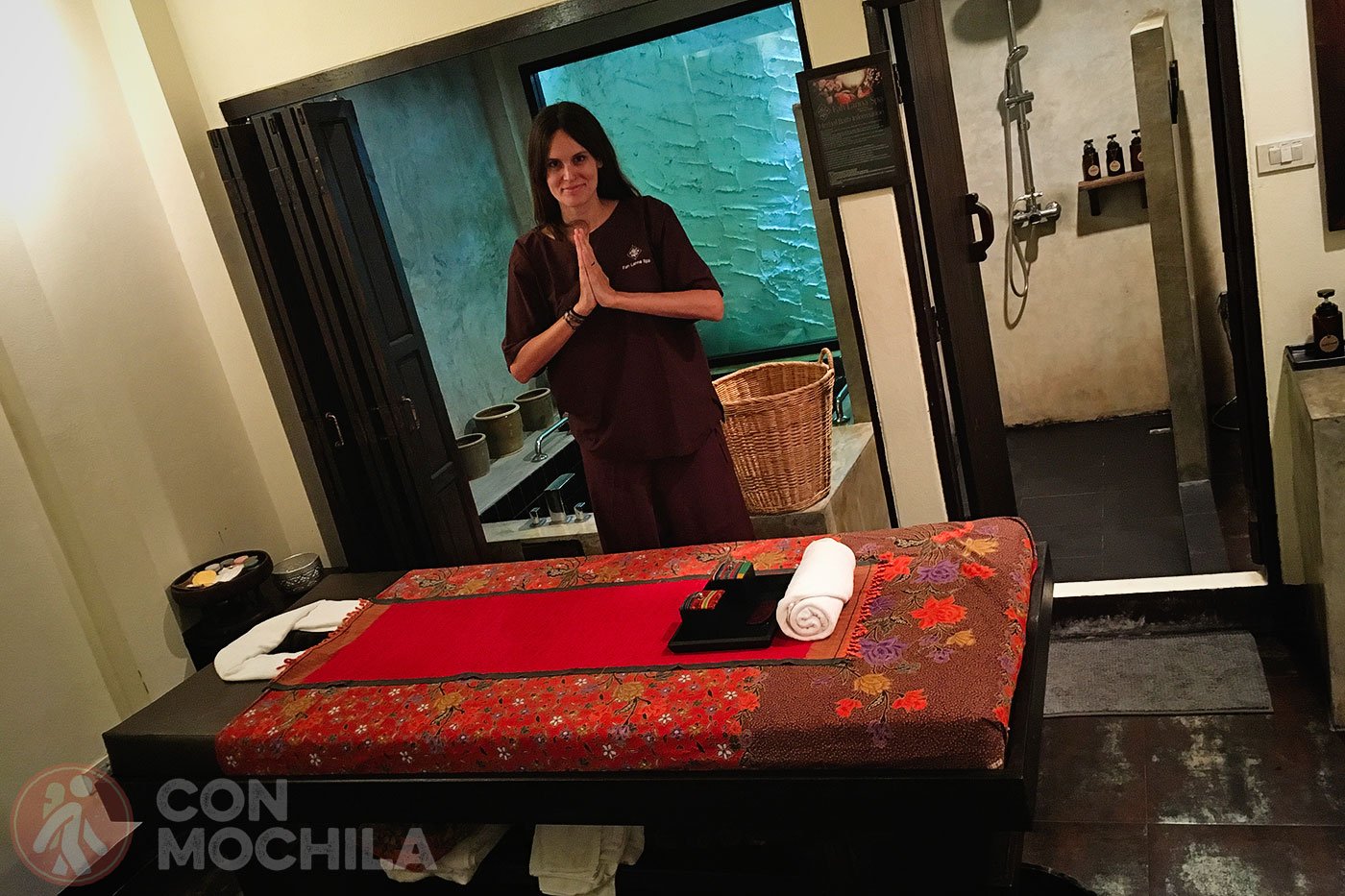
Kanchanaburi is relatively close to Bangkok, and many tours depart from the capital. Here are a few options for you to choose from:
Kanchanaburi offers a wide range of hotels and prices are more affordable than in other areas of Thailand.
After the time we have spent in this city and the times we have come here, we always stay at Sugar Cane guesthouse for long periods, located next to the river Kwai, far enough away from the main street where you can not hear the music of the bars, but still close to everything.
However, we have stayed in other hotels to treat ourselves or enjoy more comfort. The solution, obviously, has been to pay a little more, but we have had a great time in each of them.
Kanchanaburi offers a diverse range of dining and leisure options. Here are some of our favorites from our many visits:
Click on the image and it will take you to a new Google Maps window with all the points of interest to travel around Kanchanaburi.